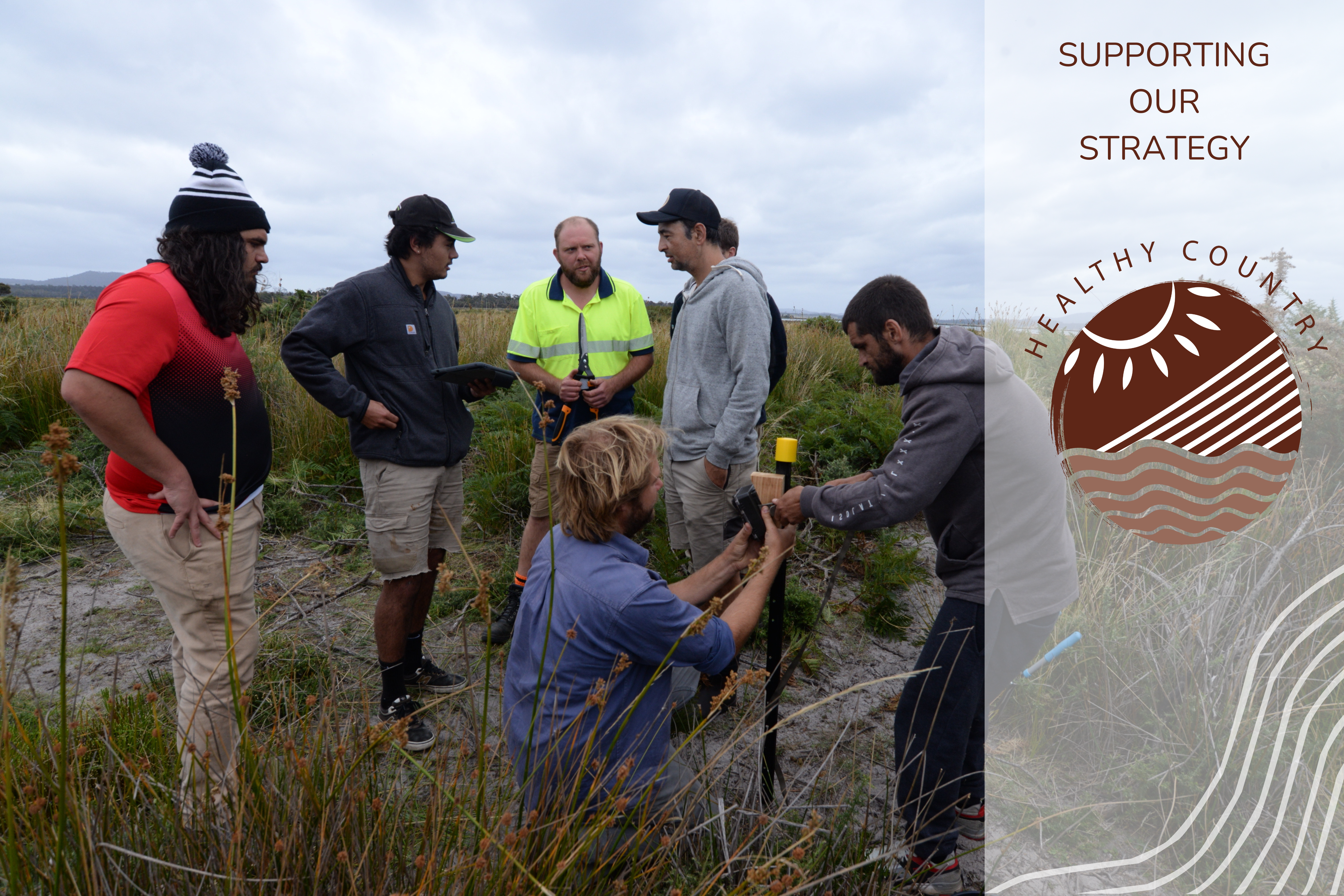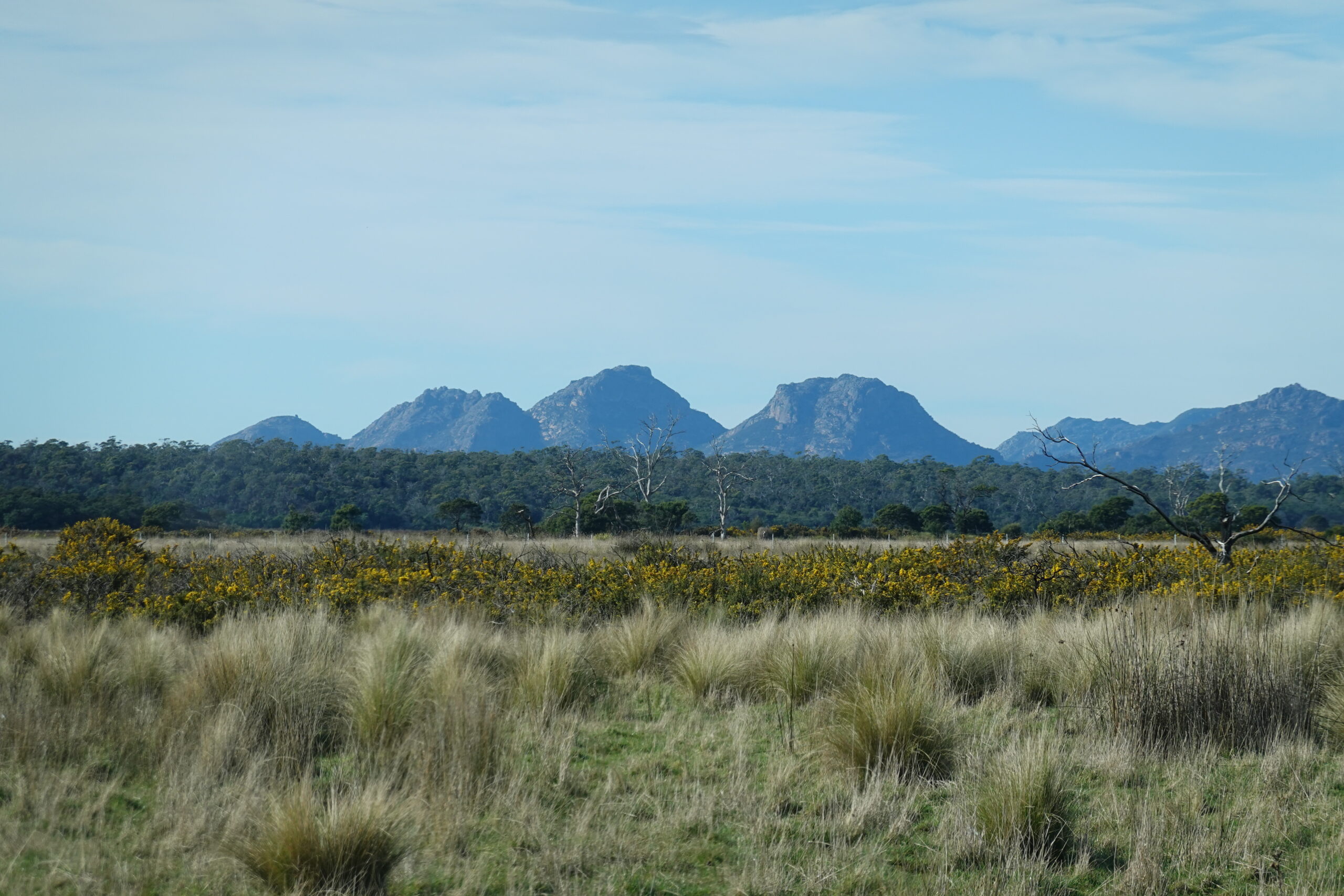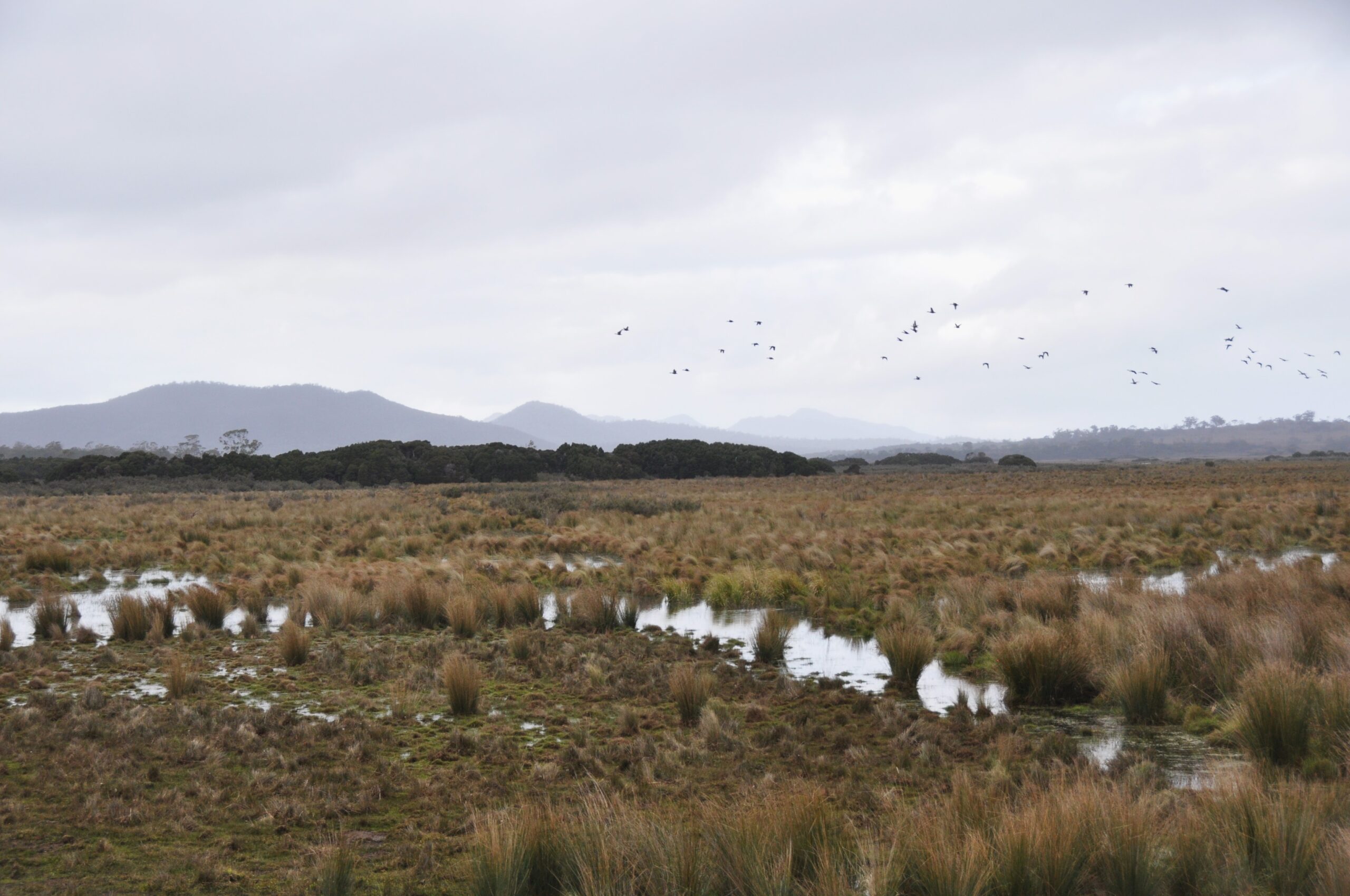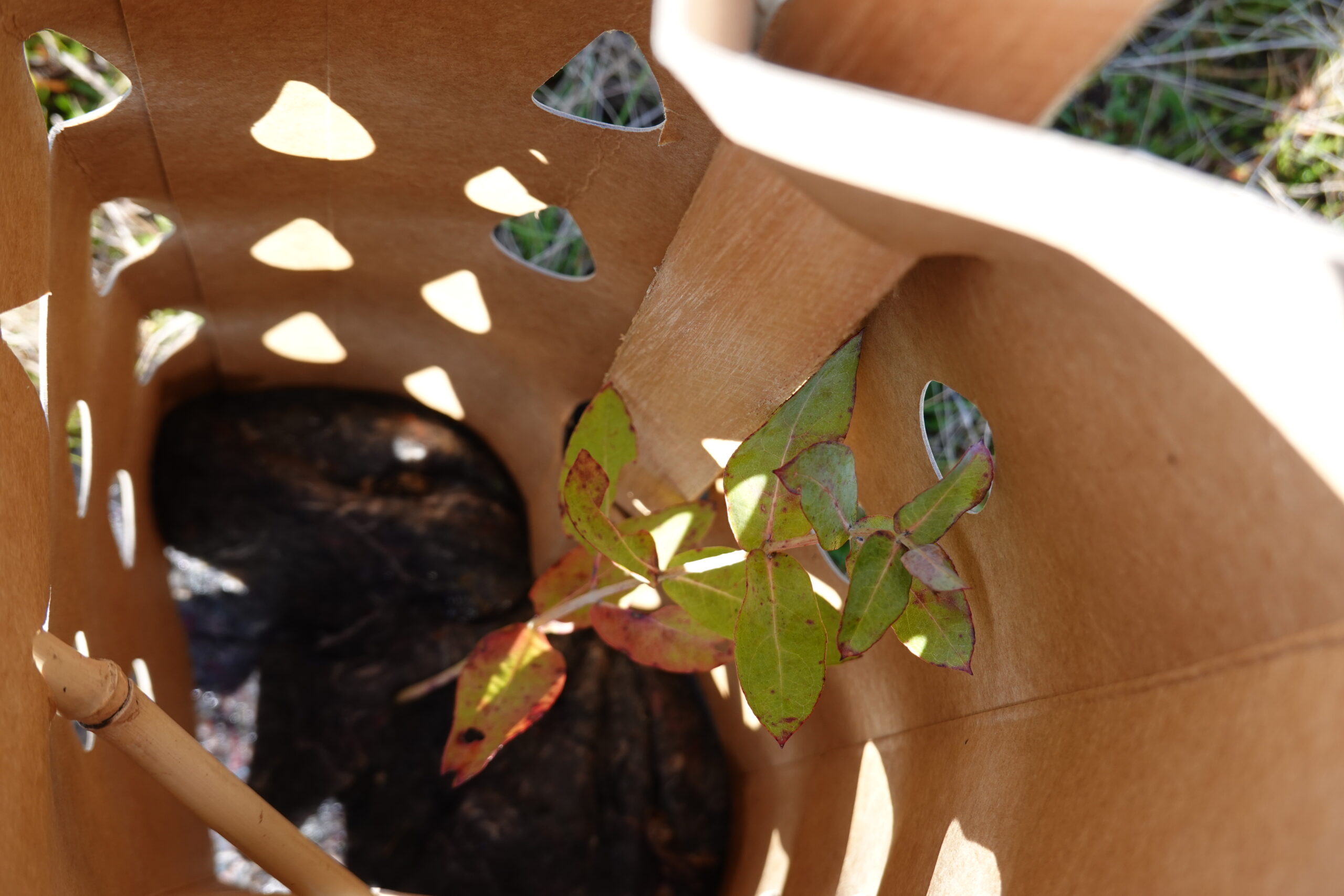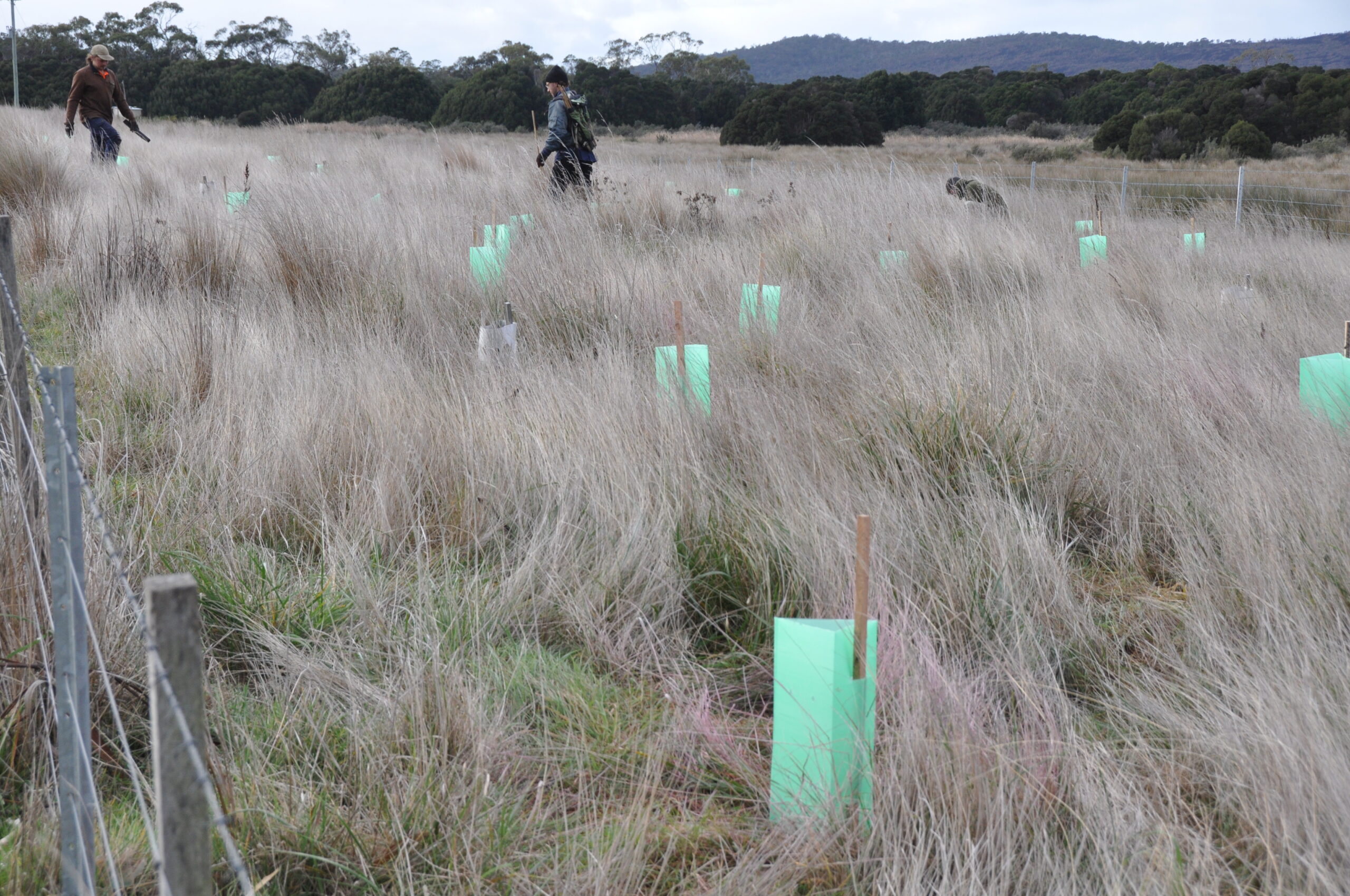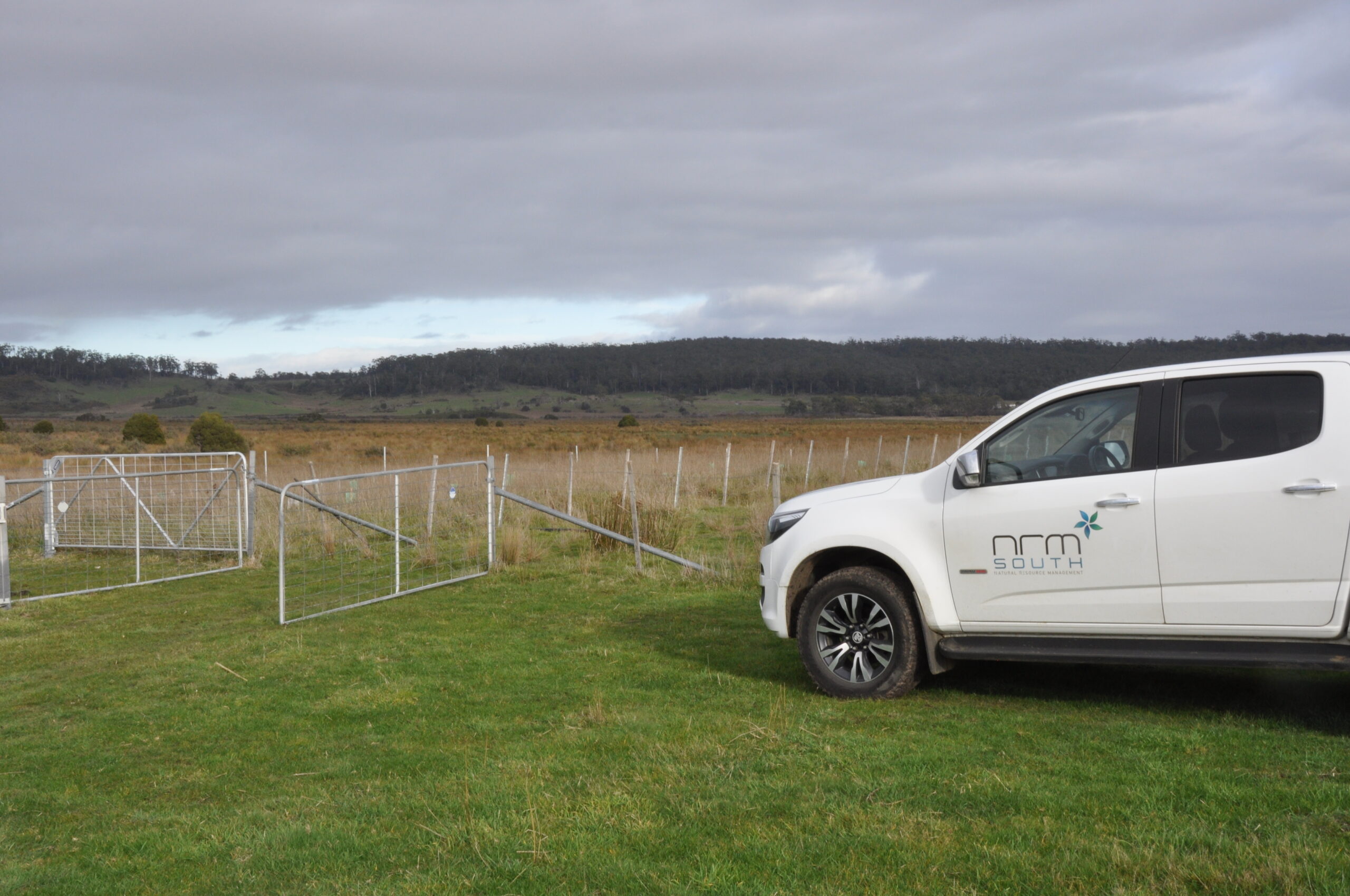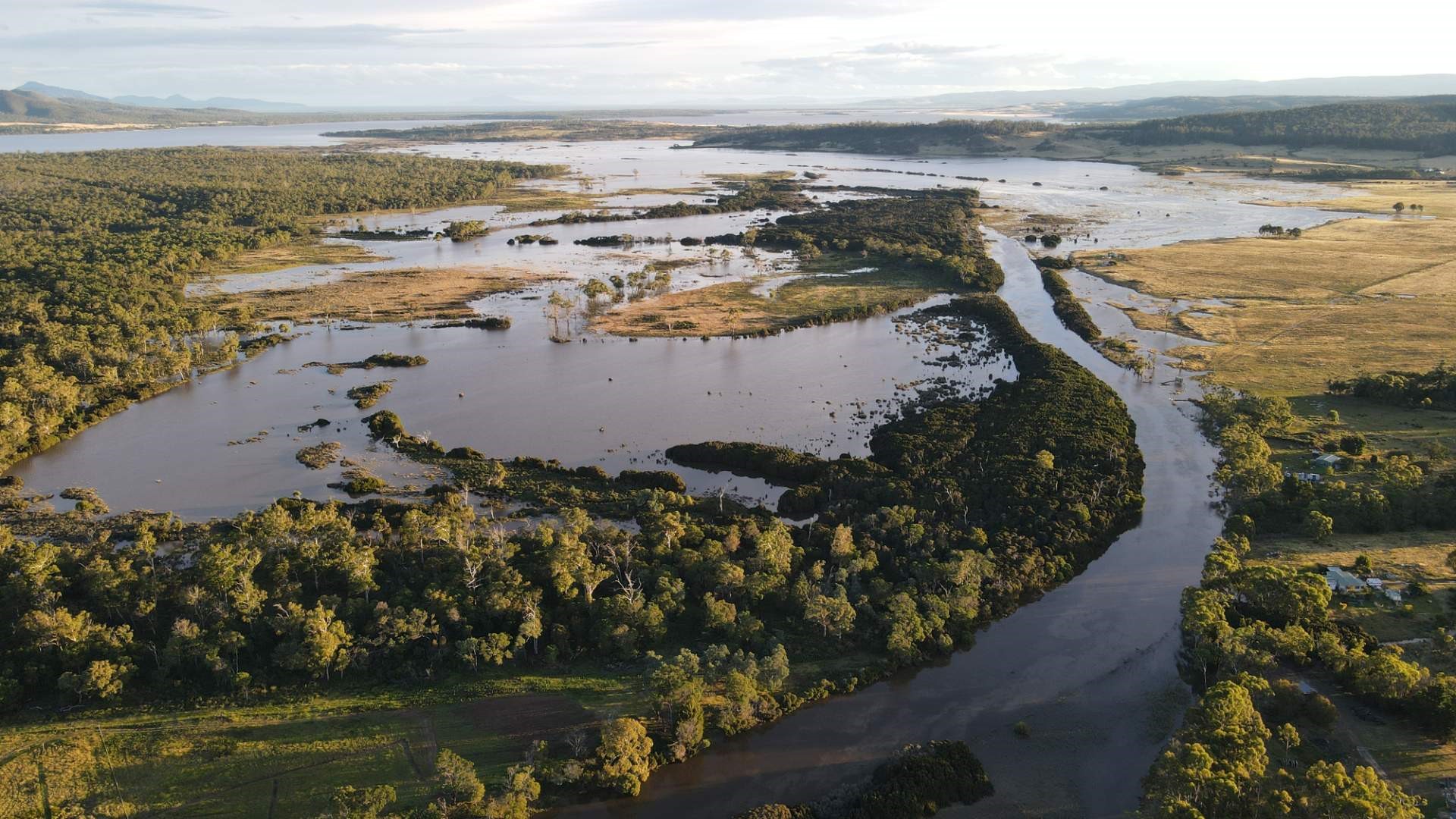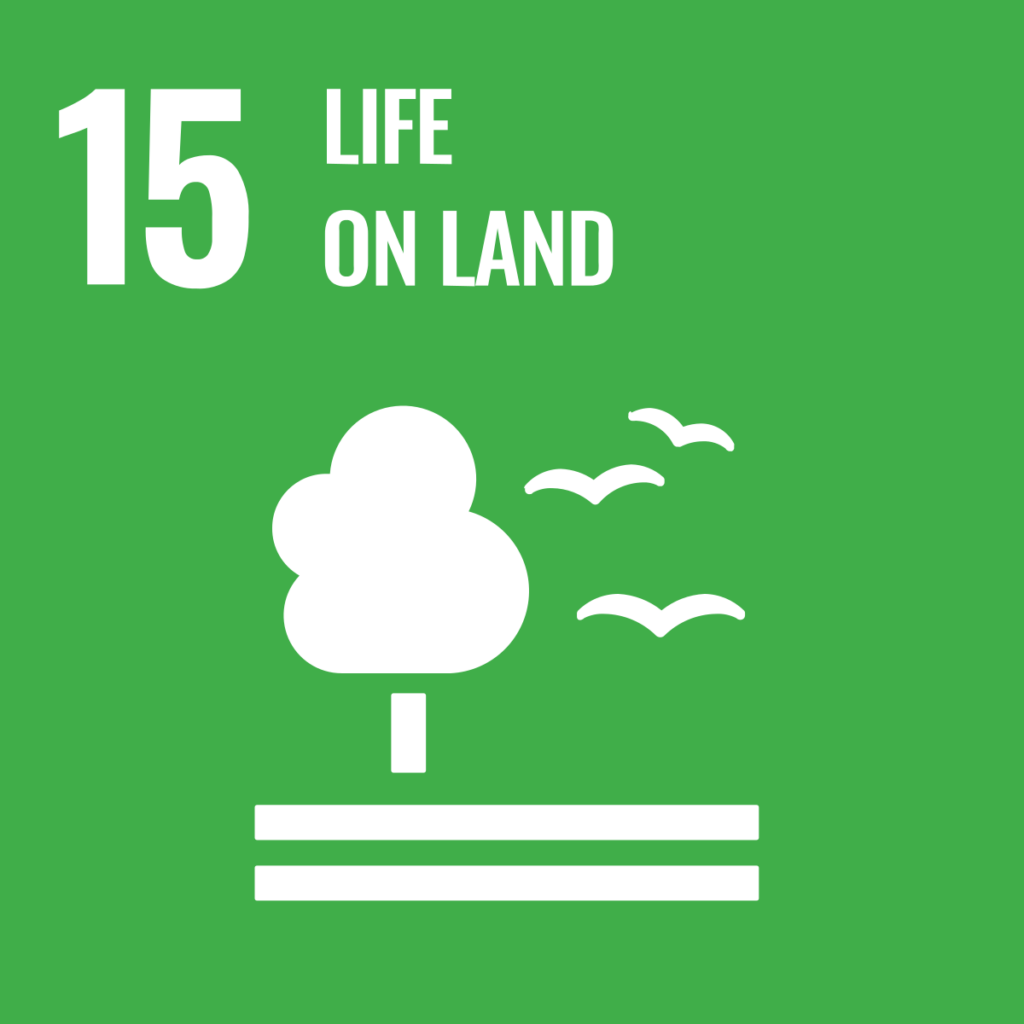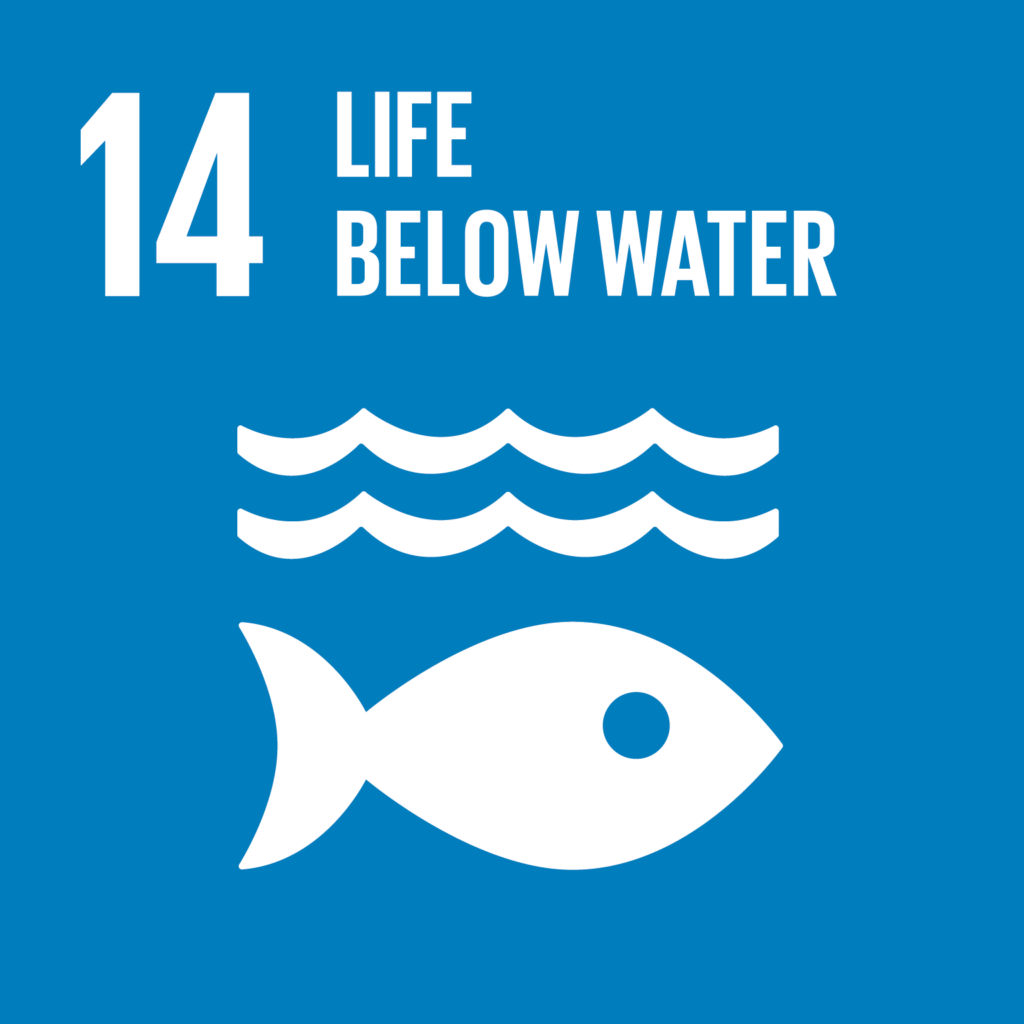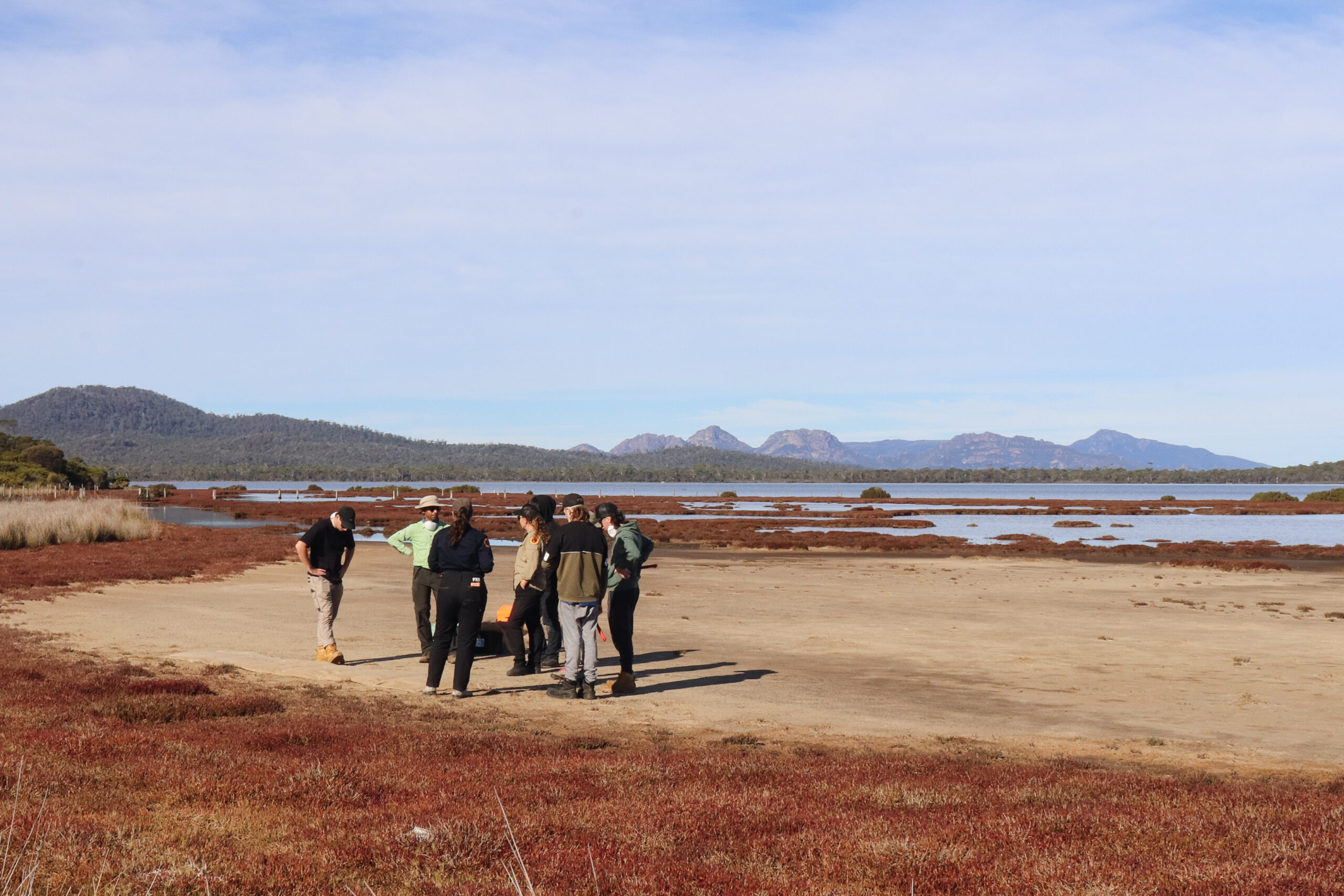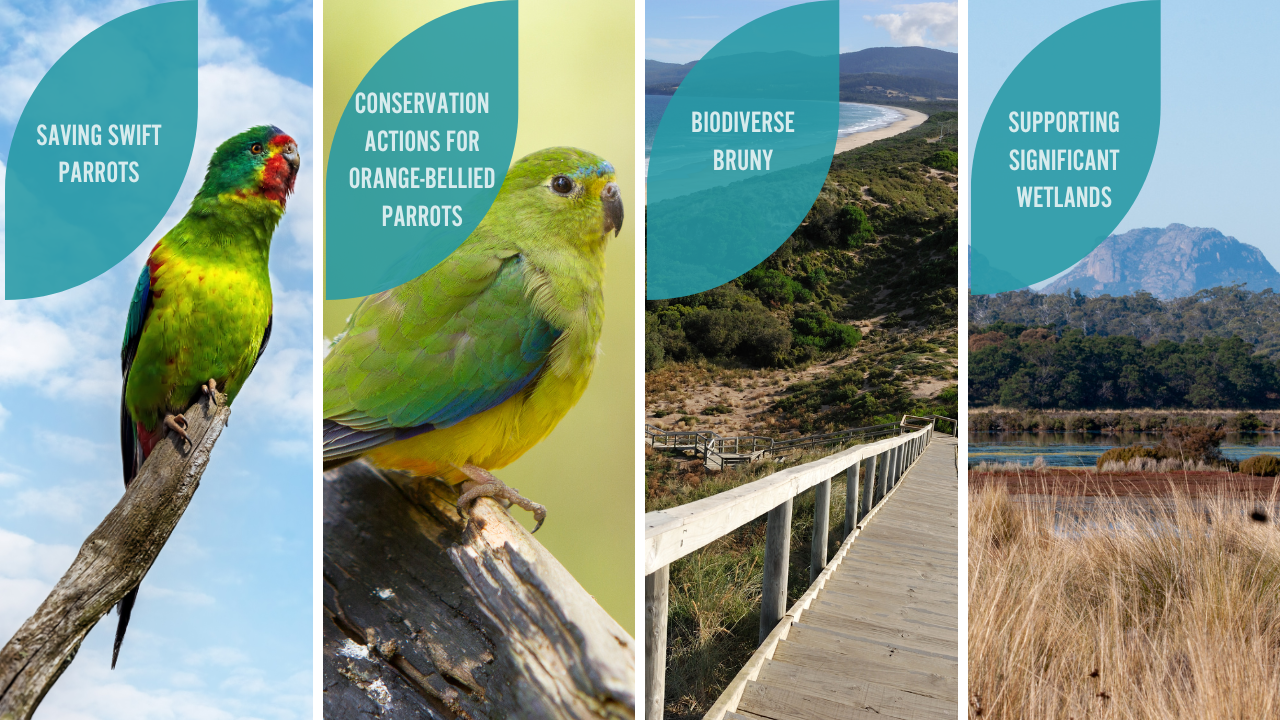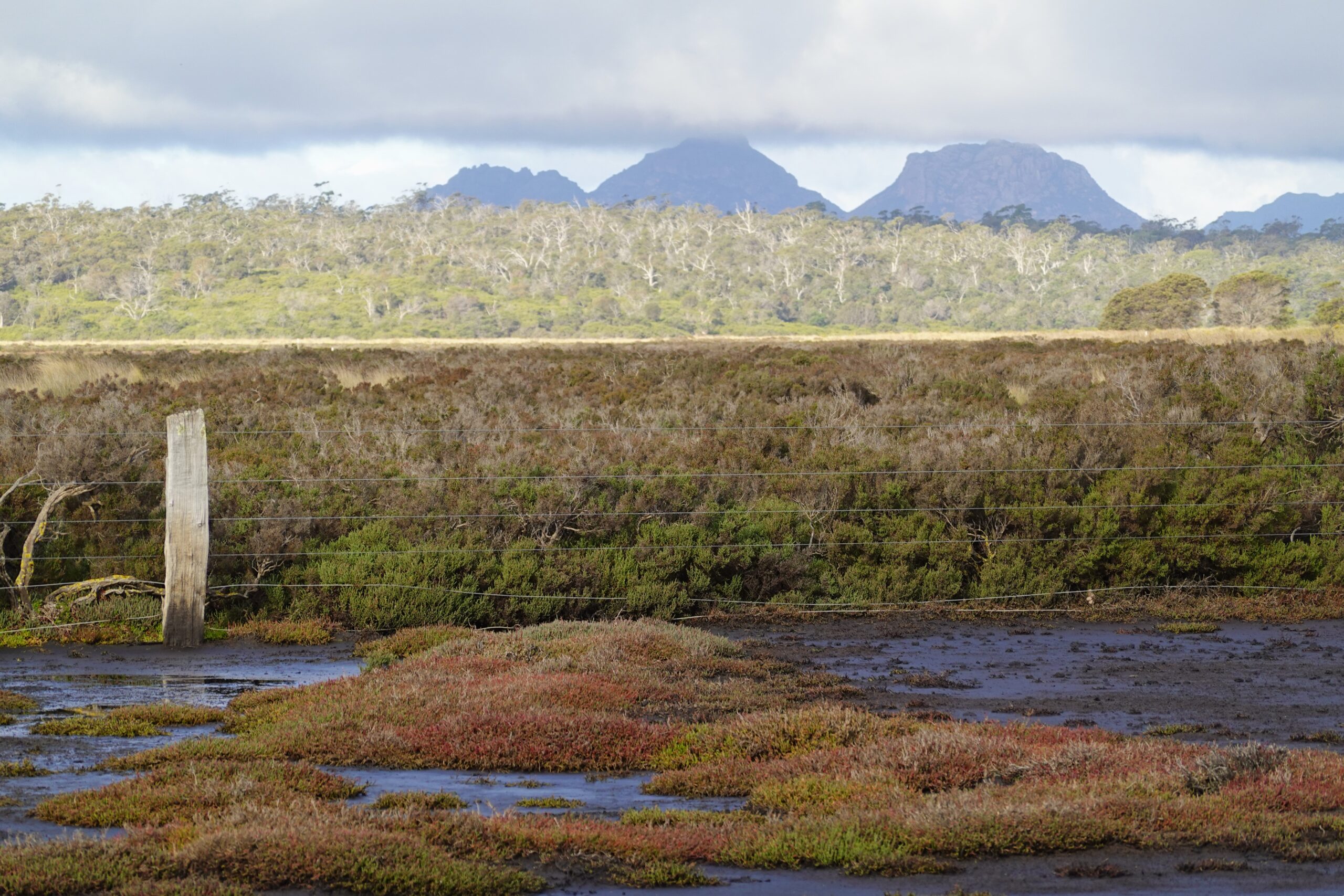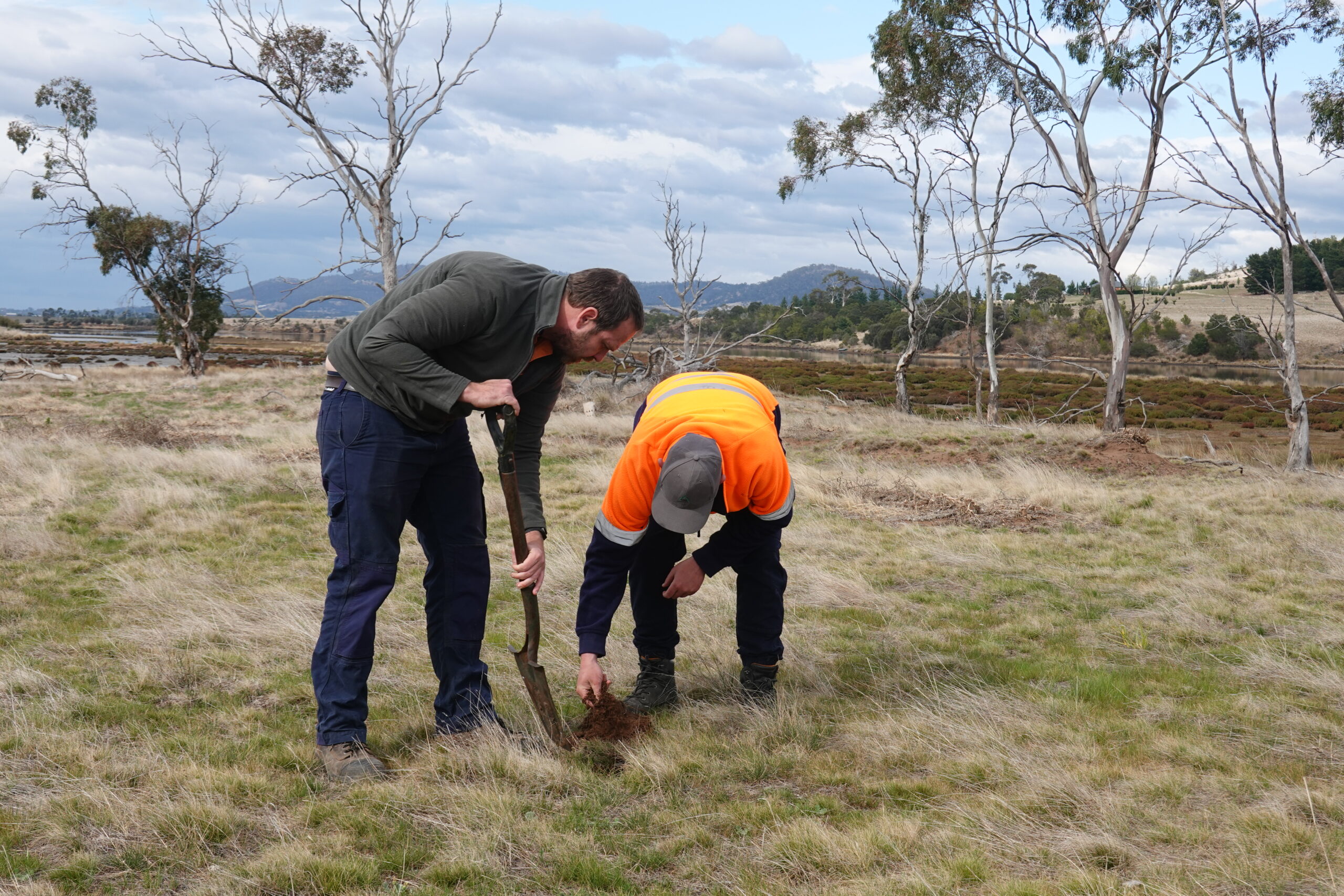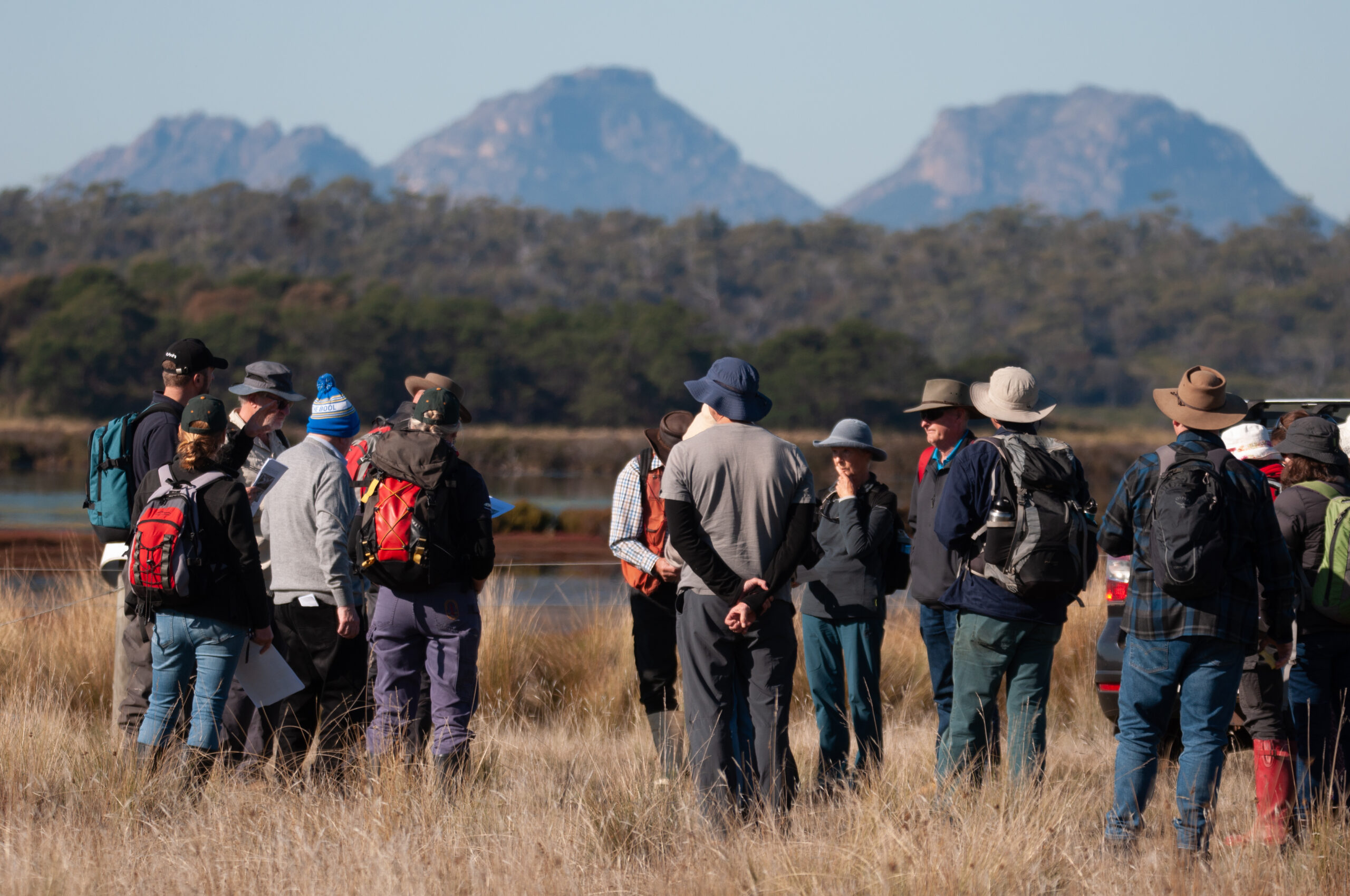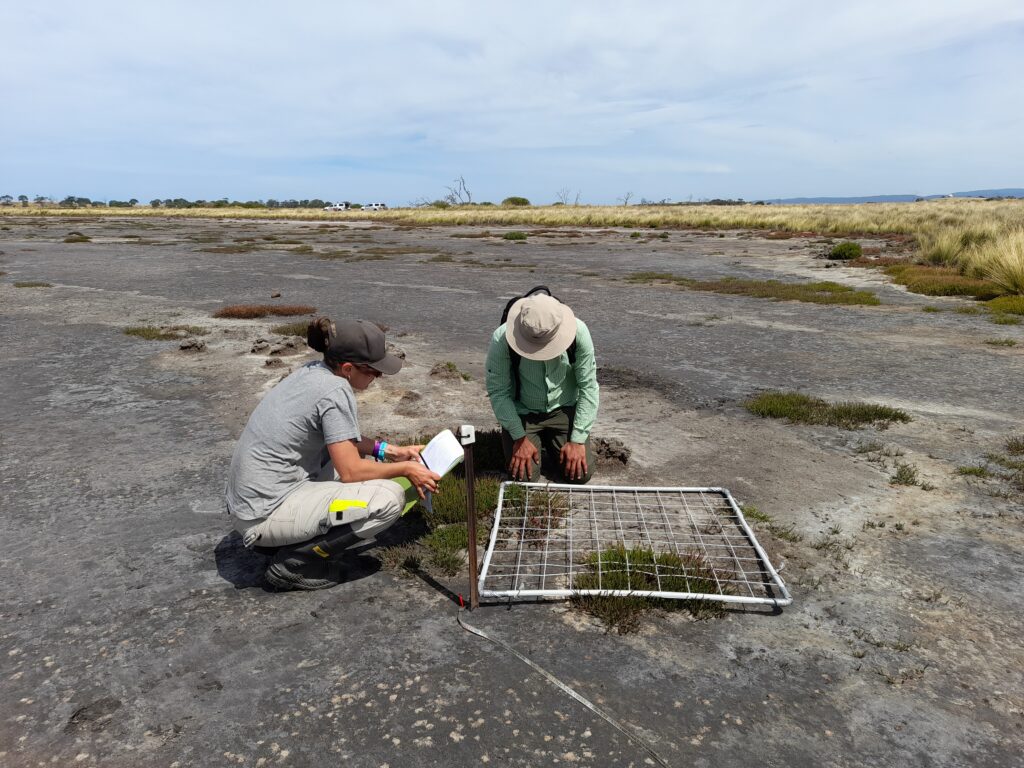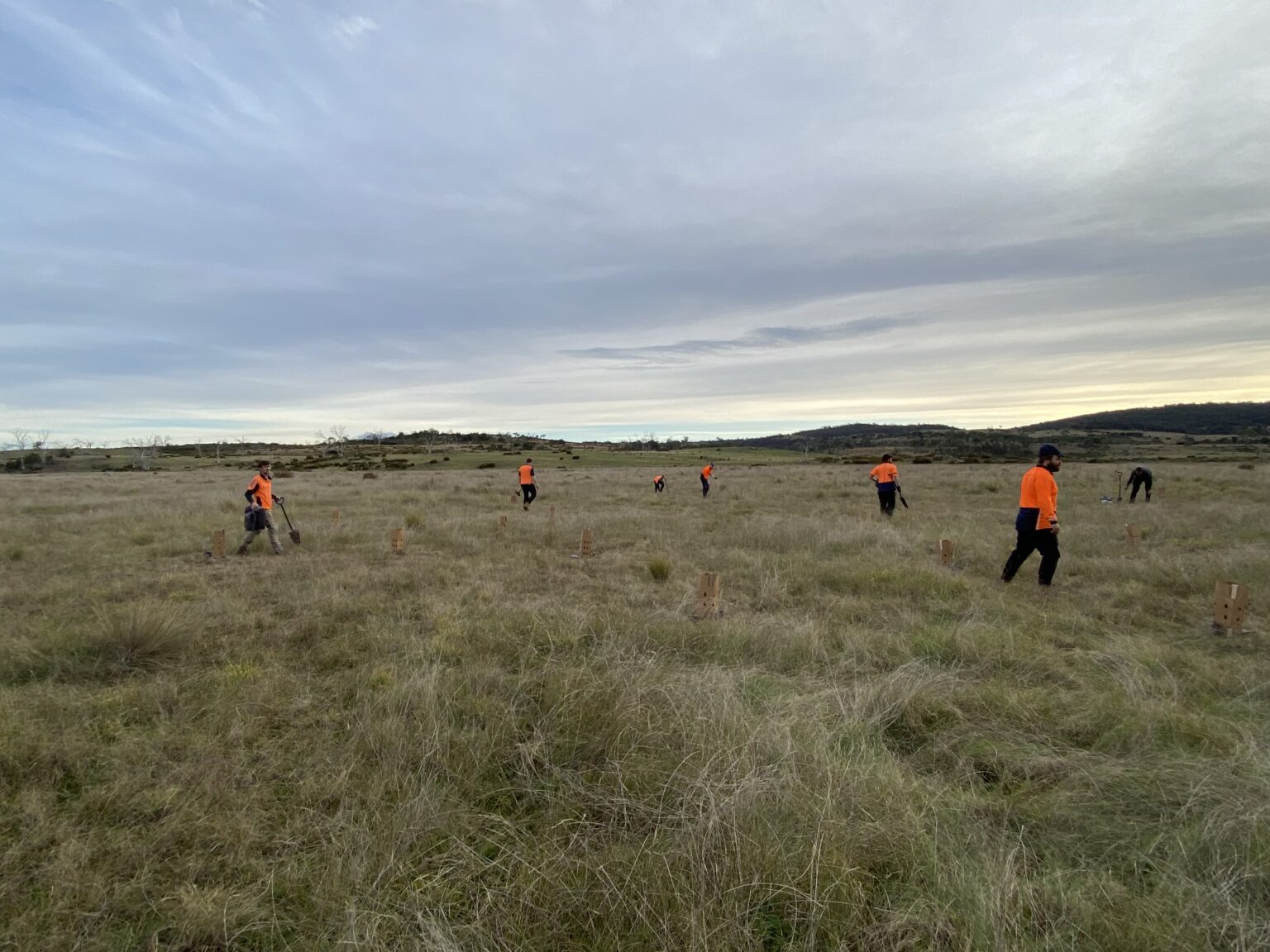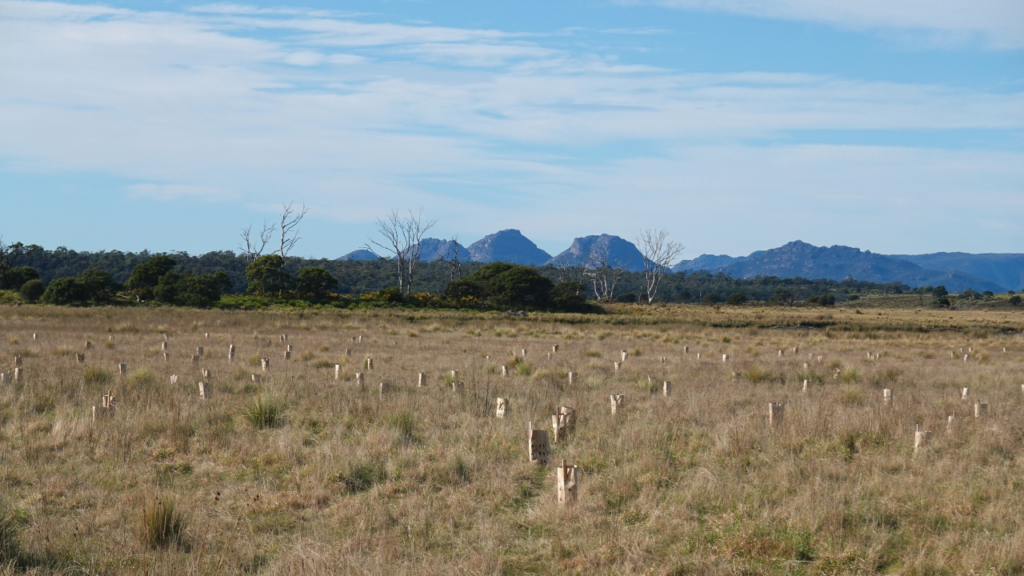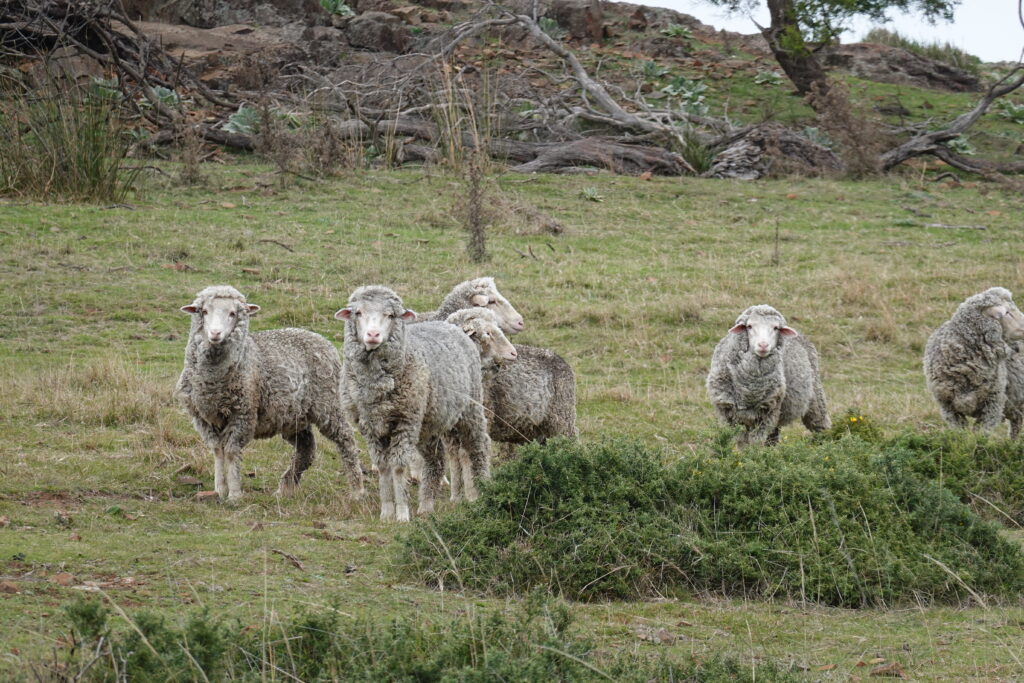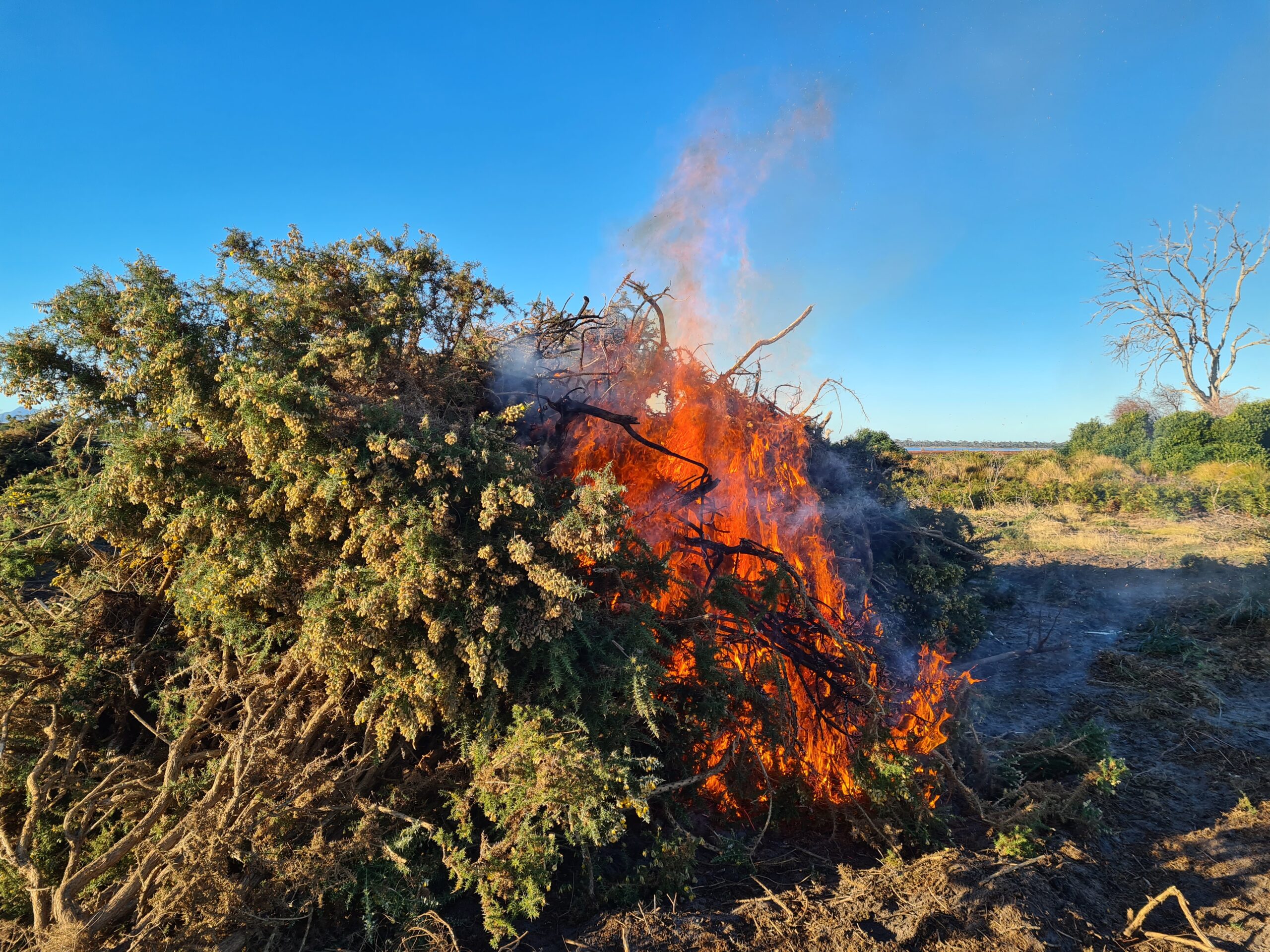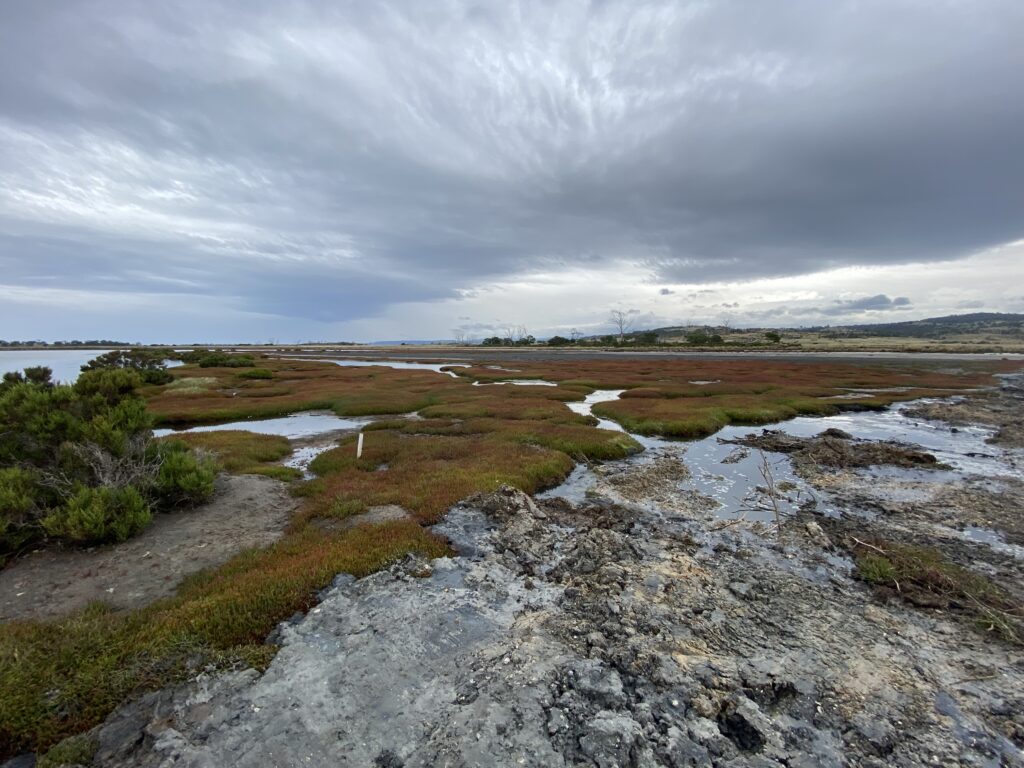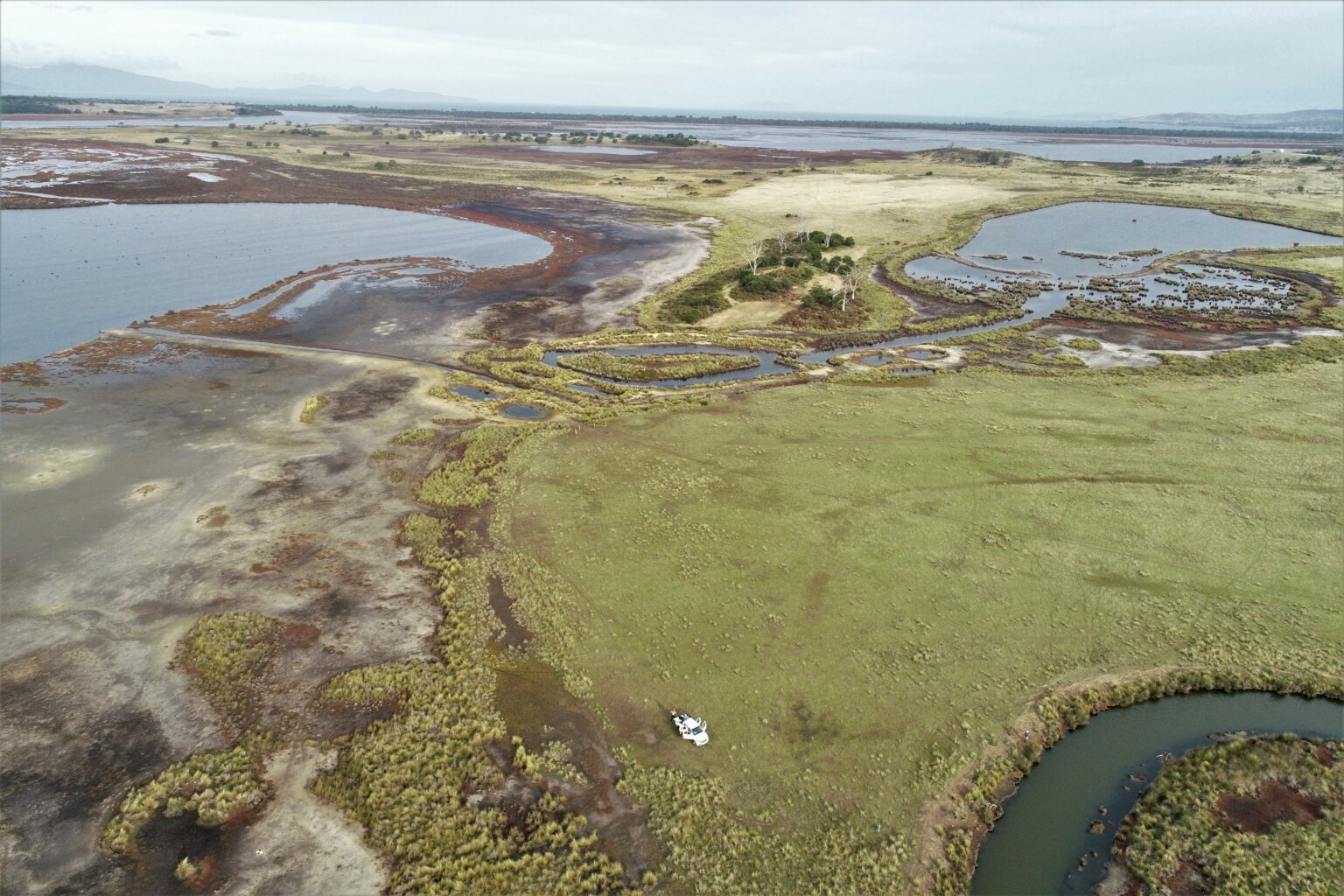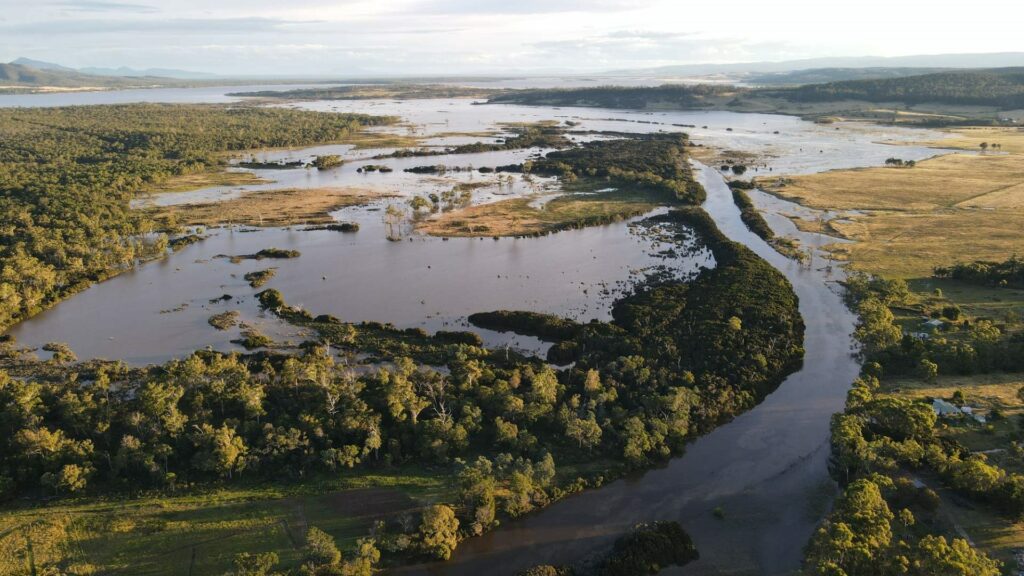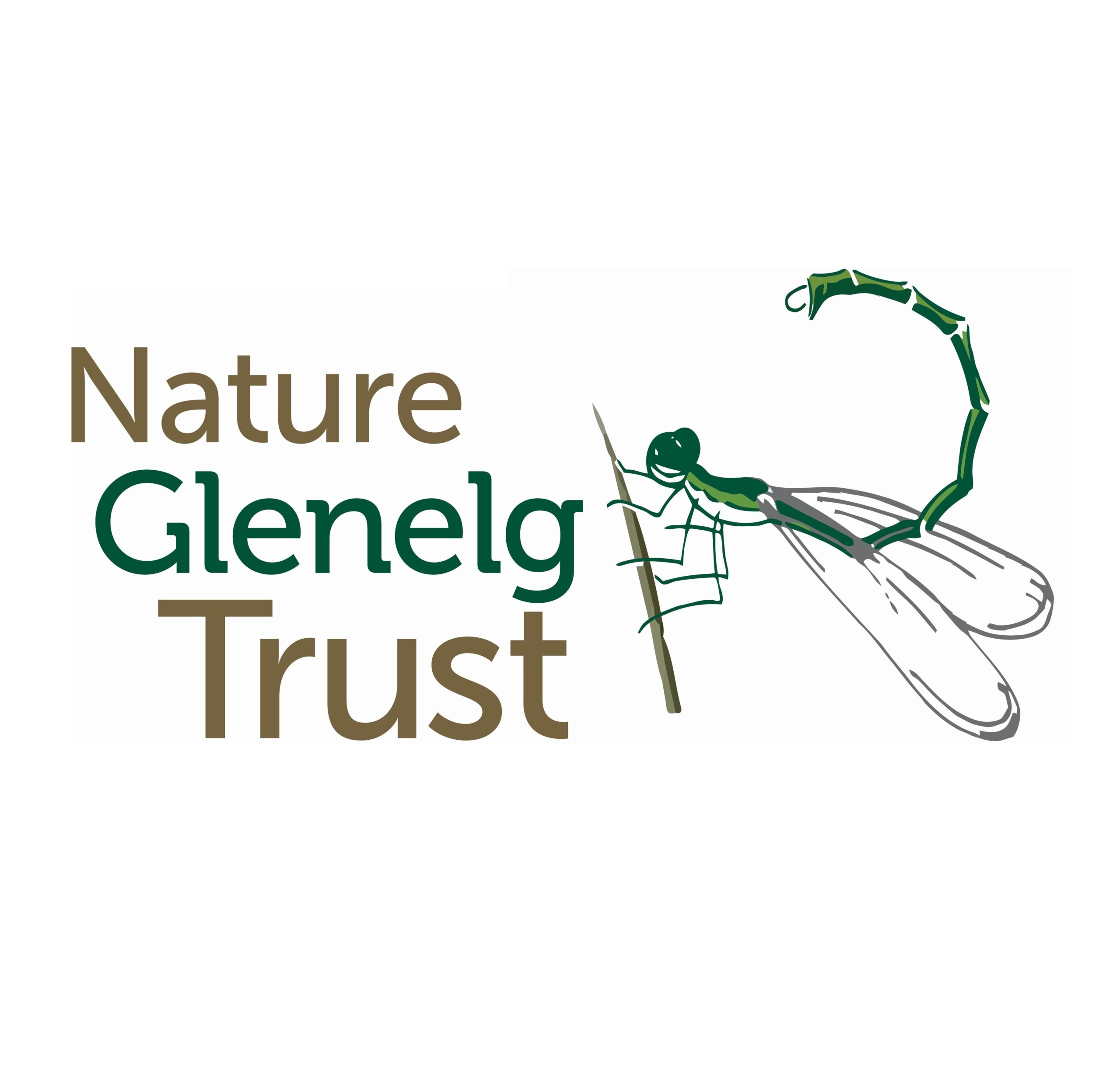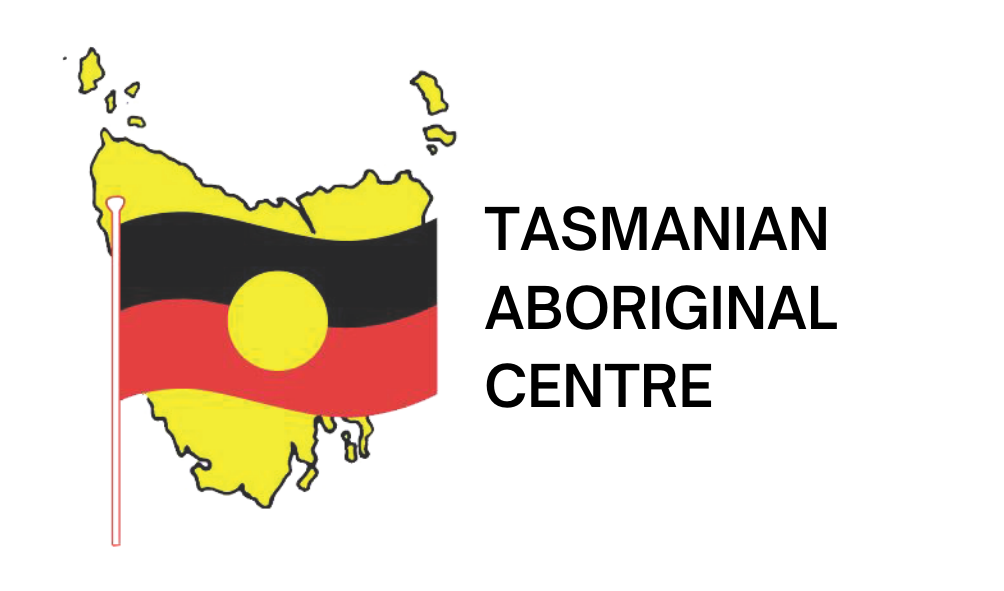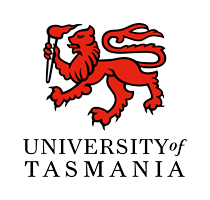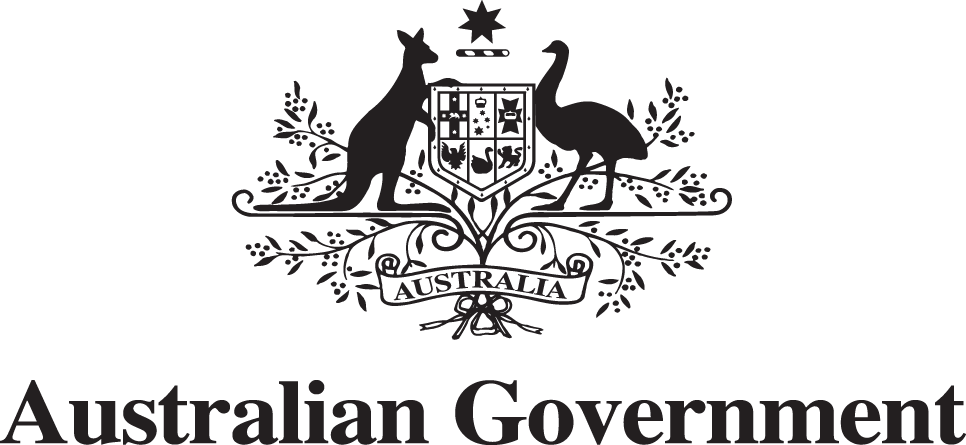Supporting Significant Wetlands
Identifying and mitigating key threatening processes at Moulting Lagoon and Apsley Marshes Ramsar sites.
Situated at the northern end of Great Oyster Bay on Tasmania’s east coast, Moulting Lagoon and the nearby Apsley Marshes are internationally important wetland areas. They provide critical habitat for waterbirds (including migratory species), are important fish nurseries, and filter water running off the land into the sea. The land surrounding these Ramsar-listed sites is also important for agriculture, viticulture and tourism, and the waterways themselves are important for aquaculture such as mussels and oysters.
The saltmarsh and wetland communities contained within the Moulting Lagoon/Apsley Marsh complex are under threat from weeds, damage from livestock and vehicles, the impacts of agricultural activities in the surrounding landscape and a changing climate.
For nearly two decades, NRM South has implemented a suite of actions to address these threats and to support landholders in their efforts to improve wetland health. This program of effort has delivered benefits to the species and primary producers reliant on the environmental services provided by this landscape and wetland ecosystem.
Through this project, we will be continuing our efforts to restore, enhance and protect this important wetland complex.
STRATEGY PRIORITY ww1: moulting lagoon and apsley marshes catchment
These two coastal saltmarsh wetlands are ecologically connected systems and support extensive temperate saltmarsh ecological communities.
What we are doing:
On-ground actions to improve the ecological condition of these sites through weed control, stock exclusion, revegetation and landscape connectivity.
Managing threats to hydrology by supporting actions to remediate hydrological flows and water quality.
STRATEGY PRIORITY BC4: subtropical and temperate saltmarsh
Subtropical and temperate saltmarsh is listed as a vulnerable ecological community (EPBC Act). Moulting Lagoon contains some of southern Tasmania’s most extensive areas of saltmarsh habitat, and over half of these important ecosystems have been lost across southern Tasmania over the past two centuries.
What we are doing:
Working with partners and landholders to reduce the impacts from stock, weeds, erosion and altered hydrological regimes.
Supporting the identification of existing monitoring data and the evaluation of resource condition trends.
STRATEGY PRIORITY LH1: healthy country
This wetland complex holds important cultural significance for Tasmania’s Aboriginal community.
What we are doing:
Supporting community to be involved in the management of this area of special significance, which has cultural and heritage values, and is at risk due from the impacts of climate change.
Our Approach
Working in partnership with the University of Tasmania, Nature Glenelg Trust, the Tasmanian Aboriginal Centre, the Tasmanian Land Conservancy and local landholders, this project is;
- Reinstating natural hydrology across priority locations within the wetland complex affected by altered drainage;
- Carrying out weeding and revegetation activities on areas of private land fringing Moulting Lagoon and Apsley Marshes;
- Enabling long-term monitoring and research to understand restoration benefits and climatic change in the landscape;
- Reducing erosion by restricting livestock grazing and vehicle access to support the recovery of saltmarsh and wetland vegetation at identified sites on private land adjacent to the wetland complex, and;
- Supporting the Tasmanian Aboriginal community in the management of and connection to Moulting Lagoon and Apsley Marshes;
PROJECT PILLARS
Background
The Moulting Lagoon and Apsley Marshes Ramsar sites are contiguous. They lie within the Glamorgan-Spring Bay municipal area.
The Moulting Lagoon Ramsar site, plus several sections of coastal reserve surrounding it and an additional area of land to the north, is located within the Moulting Lagoon Game Reserve, under the management of the Tasmanian Parks and Wildlife Service (NRET). Apsley Marshes is situated within a working agricultural property at the mouth of the Apsley River. A small portion of the site also falls within the Moulting Lagoon Game Reserve.
Moulting Lagoon is one of the most complex and extensive wetland systems in Tasmania, and is home to many rare and significant plants and animals. The western shore has been largely cleared, with patches of remnant vegetation remaining. It is used for livestock grazing and viticulture. The eastern shore is relatively undisturbed.
Apsley Marshes has some of the best representatives of a range of wetland types in Tasmania, including estuarine waters, coastal freshwater marsh and swamp. It has a great richness and diversity of freshwater and marine plants.
Recreational and commercial activities at these sites include shooting, fishing, boating, aquaculture, tourism, off-road driving, birdwatching and camping. The area is known for its Aboriginal cultural significance.
These sites were listed as wetlands of international importance under the Ramsar Convention on Wetlands in 1982.
Hydrology
We are working with project partners Nature Glenelg Trust (NGT) to restore natural drainage to key areas at Moulting Lagoon to to support saltmarsh and wetland vegetation extent and cover on four major landholdings adjacent to Moulting Lagoon and Apsley Marshes.
We previously worked with NGT during our most recent project activities at the site, which wrapped up in June 2023. As part of this Australian Government funded project, nine hectares of modified drainage was restored, which is having positive flow-on impacts to 114 hectares of saltmarsh habitat.
Through this project, we will continue to support hydrological restoration efforts by reinstating natural hydrology across 125 ha of the 554 ha affected by altered drainage at priority sites within the target areas Moulting Lagoon and Apsley Marshes Ramsar Sites (representing a 22% improvement from pre-project levels). Coastal wetlands also play an important role in carbon storage, storing carbon in concentrations up to four times greater than forests and grasslands (known as ‘blue carbon’). Through this hydrological restoration work, landscape health will be improved, consequently improving the capacity of this important coast wetland complex to store carbon.
Revegetation
Removing weeds and restoring native vegetation have been an important component of our project activities at Moulting Lagoon for many years. As part of our most recent project, NRM South worked with partners to control weeds (namely gorse) over 677 ha and revegetated 67 ha of private land surrounding Moulting Lagoon and Apsley Marshes with native plants including Tasmanian blue gum, drooping sheoak, teatree, tick bush, common tussock-grass and white flag iris.
Through this project, NRM South is working with partners to continue restoration efforts of woodland habitat bordering saltmarsh at the project site, through 101 ha of weeding and 87 ha of revegetation within the target areas on private land fringing the Moulting Lagoon and Apsley Marshes
Reducing Erosion
Maintaining or installing boundary fencing to prevent stock and vehicles accessing the saltmarsh can reduce saltmarsh damage, reduce disturbance to shorebirds and minimise erosion. Removing these impacts allows the saltmarsh and wetland vegetation communities to re-establish and recover. Through earlier work with project partners the Tasmanian Land Conservancy, Tasmanian Parks and Wildlife Services, Devil’s Corner and private landholders, a little over 7 km of fencing across land adjacent to Moulting Lagoon was installed, which is excluding stock from 596 ha. Through this project, we will removing livestock grazing and vehicle access to 51 ha of the 1,504 ha (3%) of private land adjacent to the wetland complex.
Aboriginal Engagement
Moulting Lagoon and Apsley Marshes are important cultural sites for Tasmania’s Aboriginal community. Through our previous project, we supported the Tasmanian Aboriginal Community to facilitate and attend cultural fire workshops over the three years. Up to 50 Tasmanian Aboriginal community members from the various regions of Tasmania attended the workshops. These activities are important for the Tasmanian Aboriginal community in the revitalisation of cultural fire practice. The workshops aim to bring together various knowledges around landscape, biodiversity and culture that inform the way in which the community cares for country. We also supported ranger staff from the Tasmanian Aboriginal Centre and young Aboriginal community members to participate in the Tasmanian Land Conservancy’s WildTracker workshops to learn wildlife monitoring techniques.
As part of this project, NRM South is supporting up to 10 community members to re-engage in work on-Country and further develop skills in environmental surveying (native fauna and introduced pests), and participate in planning, decision making and ongoing management decisions at the site
Project Goals
Reinstating natural hydrology across 125 ha
Revegetation across 87 ha
Weed control across 101 ha
Up to 10 Tasmanian Aboriginal community members engaged in working on Country
Delivering 15 community engagement events
Establishing conservation covenants covering 51 ha
Past Projects
Important Wetlands
Our previous project at Moulting Lagoon/Apsley Marshes ran from 2019 to 2023. Through this project, we worked with partner organisations to protect around 600 ha of saltmarsh by controlling weeds and installing fencing. Hydrological restoration works were carried out across 9 ha and 20 ha of wetland habitat was revegetated with a range of locally native trees, shrubs and grasses.
Read more here.


